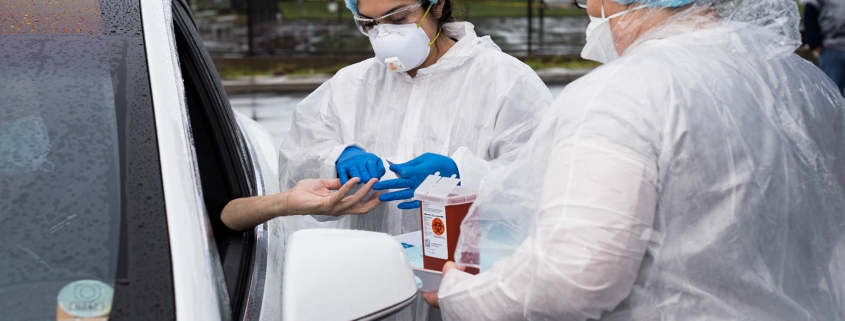Price researcher pilots coronavirus immunity study

Price School of Public Policy vice dean Neeraj Sood launched a study Friday testing Los Angeles County residents for immunity to the coronavirus. The project, launched in partnership with the L.A. County Department of Public Health and L.A. County Chief Science Officer Dr. Paul Simon, will identify individuals who have contracted and developed antibodies to combat the virus.
Over the weekend, researchers tested 1,000 adults, selected randomly through market research firm Lieberman Research Worldwide, Inc., at six locations throughout the county. The researchers designed the sample to approximately reflect the racial demographic breakdown of L.A. County to provide a more accurate estimate of immunity to the coronavirus across the county’s population.
The test determines whether a subject has antibodies that combat coronavirus pathogens, which result from exposure to and contraction of the virus. If the test, which takes 10 to 30 minutes to the time results are ready to read, comes back positive, the subject has developed immunity and has minimal risk for contracting or spreading the virus.
By testing a large number of people, it will be easier to determine how many have contracted the virus and recovered, which will give a better estimate of the virus’ hospitalization and mortality rates.
“If COVID is, say, less deadly than the flu, then maybe we might say, ‘Hey, we can open up our economy, or we can ease some of the restrictions we have right now,’” Sood said. “But if COVID turns out to be 10 times more deadly than the flu, then you will be like, ‘No, we cannot open up our economy — we’ve got to be more careful about it.’”
The research team will repeat the testing with different 1,000-subject samples every two to three weeks, Sood said. The periodic tests will provide longitudinal data about the proportion of county residents who develop immunity over the course of the pandemic and when cases begin to plateau.
According to a press release from the L.A. County Department of Public Health and the Price school, antibody testing may enable certain employees to return to work without becoming ill or spreading the coronavirus.
“Testing for antibodies to the virus that causes COVID-19, in addition to testing for the absence of the virus itself using traditional COVID-19 tests, could potentially identify those who can enter the workforce with minimal risk of infecting others or getting infected themselves,” the press release read.
According to Chief Health Officer Dr. Sarah Van Orman, Student Health is working with health officials around the nation to track the success and feasibility of antibody testing and the possibility of implementing it at USC in the future.
“There’s a lot of conversation about the use of antibody testing as a way to determine, ‘Are people immune?’” Van Orman said. “Right now, what we know about antibody testing is that we don’t know enough to make a good recommendation on it.”
Sood said he hopes that with testing, individuals who have recovered from the coronavirus can be flagged as potential plasma donors. Research has shown that injections of plasma from people immune to the virus can help coronavirus patients recover, he said.
Sood plans to discuss with the National Institutes of Health’s Institutional Review Board, which prevents mistreatment of human subjects in research, the possibility of sharing information of subjects who test positive for coronavirus antibodies with scientists looking into plasma treatment.
The study will continue through the coming months until the end of the pandemic or the depletion of funds, Sood said. He plans to present his findings to colleagues in his field and use the results to draw conclusions about the effectiveness of measures like social distancing and stay-at-home orders.
“If the number of infections is rising rapidly, then it says stay-at-home is not working,” Sood said. “If the number of infections have remained flat or are not rising, then that might say stay-at-home is working. Plus, this tells us when the epidemic might end.”

